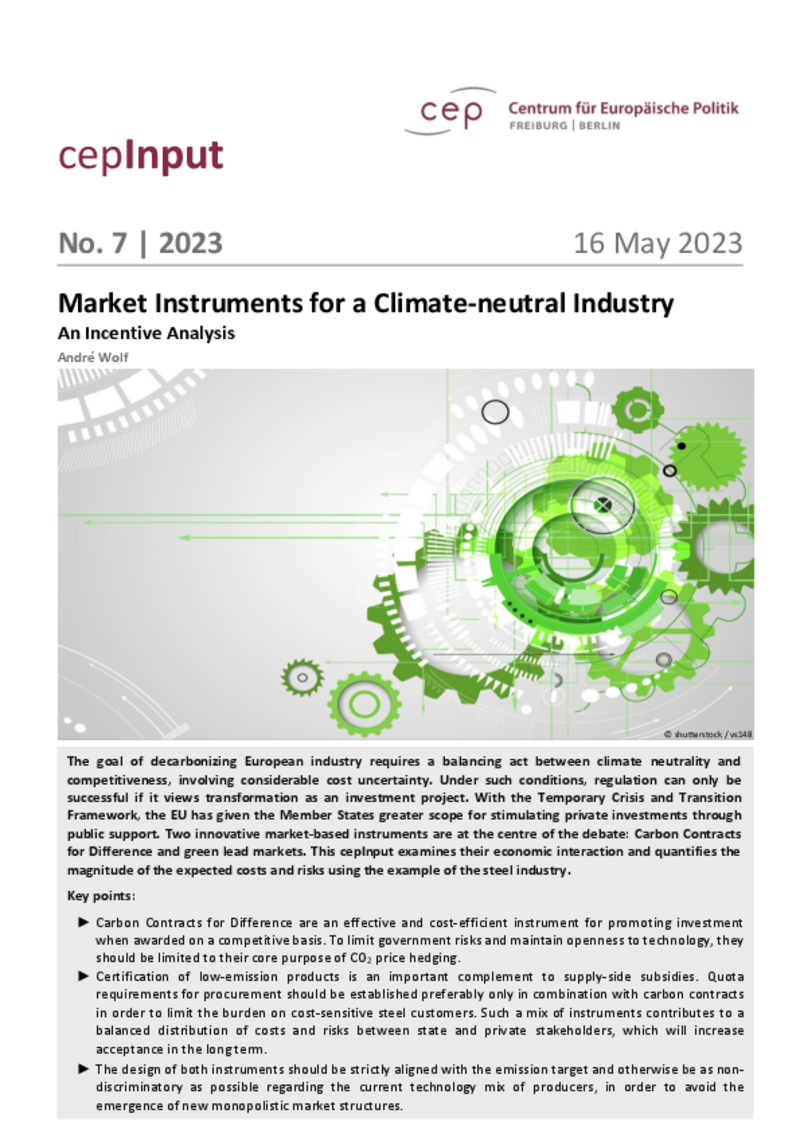
Climate
Market Instruments for a Climate-neutral Industry (cepInput)
cepInput
"The primary goal must remain emissions reduction," says cep economist André Wolf, who for the first time has examined the need for innovation at the regulatory level. CCfDs and green lead markets are the best solution, he says. They would cushion revenue uncertainties caused by regulation and reward entrepreneurial ambition in decarbonisation. "Moreover, they can be combined without leading to double subsidies," emphasises the cep expert. Their interaction makes it possible to put regulation on a broader footing. This must be done on a competitive basis.
Wolf calls for an honest debate on the opportunities and risks that still exist - and cites an example: the decarbonisation of the European steel industry. For this industry, swiftly introduced, nationwide CCfDs in the transition phase would result in government expenditure averaging around 3 billion euros annually in Germany and 10 to 12 billion euros for all EU states together. "This is a rather small amount compared to the total costs of the energy transition," sums up the cep expert.
According to Wolf, a development of lead markets based on procurement quotas for green steel would also only lead to minor additional cost burdens for central downstream industries if prices were set competitively.
Download PDF
| Market Instruments for a Climate-neutral Industry (cepInput) (publ. 05.19.2023) | 1 MB | Download | |
 | |||



